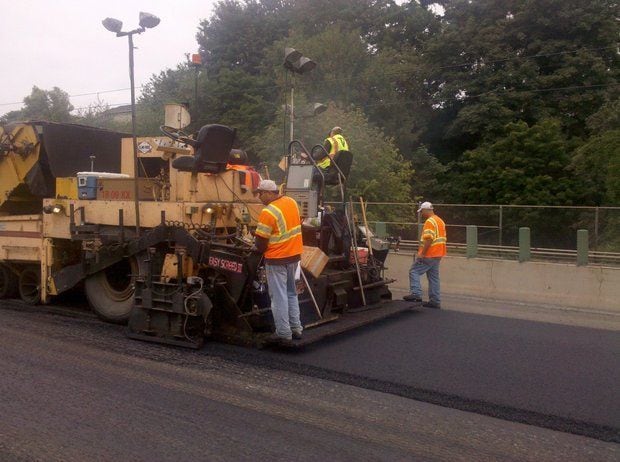Two opinion pieces about the impending special session were published today, including this one. Click here to read the other opinion piece written by House Republican Leader Christine Drazan.
McLain, Susan
For OregonLive/The Oregonian
In the Oregon House, McLain, a Democrat, is the representative for Forest Grove, Cornelius, and Hillsboro in District 29. She is one of the Joint Committee on Transportation’s co-chairs.
Our most basic public service is transportation, which supports social justice and economic growth. A multi-modal, safe, and resilient system is essential to every community in the state. However, the Oregon Department of Transportation currently lacks the funding necessary to carry out its primary duty of maintaining our roads, bridges, and other infrastructure because the state has underfunded its transportation system for decades.
The problem is systemic. With some of the lowest transportation-related fees in the country, Oregon lacks the means to generate enough money for upkeep. Due to a lack of diversified funding sources, we mostly rely on the gas tax, which is predicted to decrease this biennium as electrification and fuel economy rise. The situation has been made worse by rising inflation, which has also raised ODOT’s maintenance and building expenditures. We need secure, varied, and adequate funding for the future.
During the most recent legislative session, lawmakers sought to find a solution to the challenge of how to effectively reinvest in our roads and bridges. Regretfully, our proposal, House Bill 2025, failed to pass in the last days of the session. Nonetheless, funding for essential upkeep, security, and system enhancements is still desperately needed. As co-chair of the Joint Committee on Transportation, I agree with Governor Tina Kotek that in order to finish our budget work for this biennium, a special legislative session must be held in August.
Even though HB 2025 didn’t move forward, we shouldn’t disregard the aims it set forth or the research that went into it. For more than a year, we worked to determine the most effective means of guaranteeing a multimodal, safe, and resilient transportation system that benefits all Oregonians. A thirteen-stop tour that visited every part of the state; more than fifty hours of workgroup meetings with a range of perspectives; and six months of public informational meetings, hearings, and work sessions in the Joint Transportation and Joint Transportation Reinvestment Committees were all part of our extensive conversations with stakeholders and communities.
Over the past 18 months, I have personally met with more than 800 advocates, stakeholders, and jurisdictional partners to discuss how to prioritize and maintain our transportation infrastructure. We have often heard the need to provide funding for robust and safe infrastructure throughout the entire state. A comprehensive solution that enables state and local partners to address the infrastructure demands of all Oregonians must therefore be the aim.
We were able to shape HB 2025 with the assistance of that comprehensive outreach, which included the following components that are necessary for any solution:
-
Stable and right-sized funding for maintenance and operations, preservation, safety and completion of critical projects;
-
Modernization of transportation funding with short, medium and long-term funding streams, with fee increases spread over a 10-12-year period;
-
Requirement for all road users, including electric vehicles and delivery fleets, to pay their fair share;
-
Key accountability elements to ensure ODOT is a good steward of the public s investments;
-
Historic safety investments in Great Streets and Safe Routes to School programs, and in wildlife crossings
-
Increased transit funding sources to avoid dramatic cuts and stabilize transit services statewide.
However, as we discovered when the law failed, the idea had numerous intricate layers, as I mentioned in an interview with Steve Dunn of KATU. Delays in obtaining the revenue measures’ analysis also hindered our ability to have important conversations. With the upcoming plan, we need to steer clear of these similar traps.
ODOT has announced layoffs for hundreds of current employees in critical jobs and is unable to continue providing even some of its most basic services to Oregonians due to the Legislature’s failure to adopt HB 2025. These are employees who operate on the front lines around the state, handling crises like cold conditions and wildfires, among other important duties. ODOT lacks the funding required to maintain or repair state roads or help with local infrastructure requirements, and approximately 5,000 county road miles and 2,355 county bridges are in poor or fair condition throughout the state. Core duties including snow plowing, debris removal, and wildfire protection will be reduced, and twelve ODOT Service Stations throughout the state will close.
It is the responsibility of lawmakers to find a way out of HB 2025 that maintains the security and efficiency of our multi-modal system. I implore my friends to make sure the solution includes the necessary components of HB2025. We need to make sure ODOT delivers necessary services and stable our system. Ignoring the crisis is not an option. Delays will only make backlogs more costly and raise the hazards to both public safety and economic stability. To make sure Oregonians have access to the services they require, we were elected. Let’s resume our work and complete the task.





More Stories
Opinion: Systemic transportation underfunding requires new investment model
Opinion: Systemic transportation underfunding requires new investment model
Opinion: Systemic transportation underfunding requires new investment model